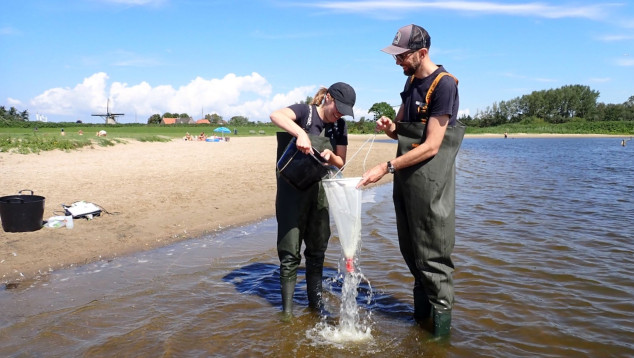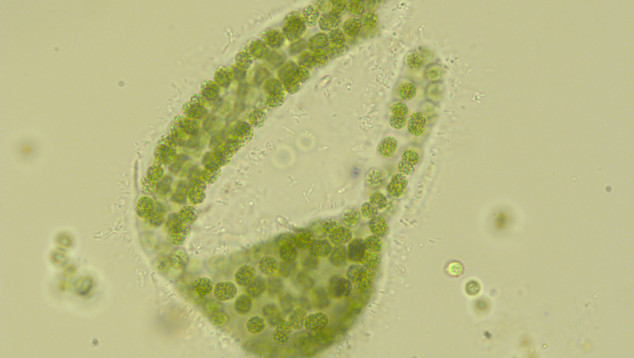A summer of research into blue-green algae in mini lakes

A summer of research into blue-green algae in mini lakes
PhD in progressBlue-green algae disrupt many people's swimming plans. Picture this: the weather is nice and you want to hit the water, but you're out of luck! The beach is closed because of a blue-green algae bloom. But why does a a swimming spot close when that happens?
Blue-green algae are actually not algae at all, but bacteria. In the scientific world, they are called cyanobacteria. When they die, you can see why they are called ‘blue’ or ‘cyano’: this is when their blue dye often appears. Cyanobacteria are common in the Netherlands because they grow well in stagnant water with lots of dissolved nutrients. They thrive in warm weather, so do especially well in summer. Sometimes they even grow so well that the water turns green! Such a large amount of cyanobacteria in the water is called a cyanobacterial bloom or blue-green algae bloom. Such blooms are not only unpleasant, but can also be dangerous because some cyanobacteria can produce toxins that are harmful to humans and animals.
For my PhD project I investigate the toxins in the water during cyanobacterial blooms. In doing so, we look at many different things in the water, such as many nutrients are in the water, what types of cyanobacteria are present and how many toxins are in the water.
This summer I am doing a big experiment for my project. I am going to look at the effect of temperature and nutrients in twelve 1,000-litre mini lakes in our lab in Wageningen. We will fill the mini lakes with water from a lake near Delft and then observe for an entire season what happens to the cyanobacteria.
In the future, better fundamental knowledge of cyanobacteria may help water managers to even better assess the risks of cyanobacterial toxins. They can use this assessment to better predict, for example, whether a bloom contains toxins or not, and therefore whether it is safe to swim. Hopefully, the results of my research can contribute to that!


